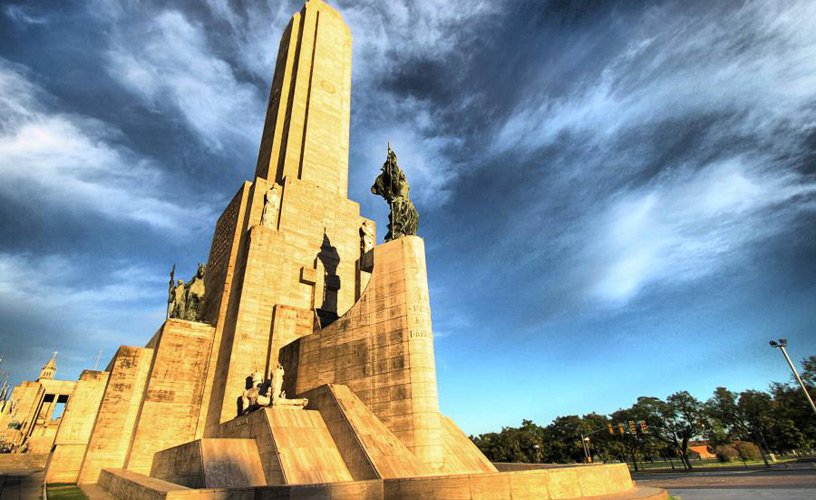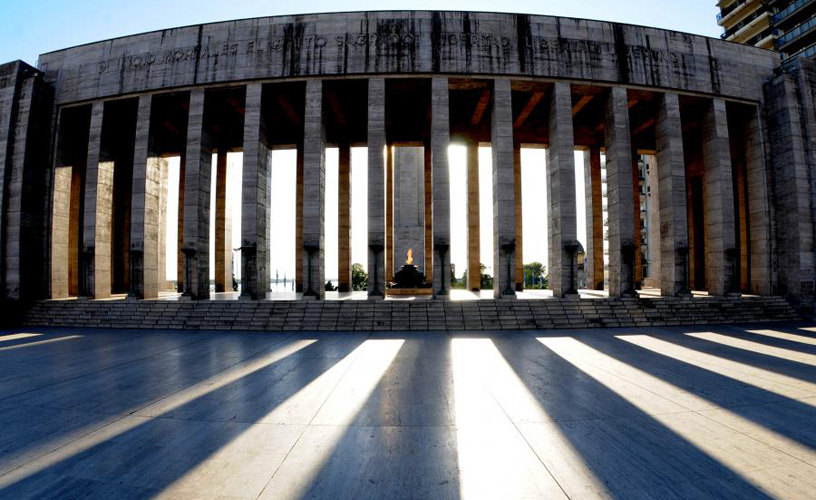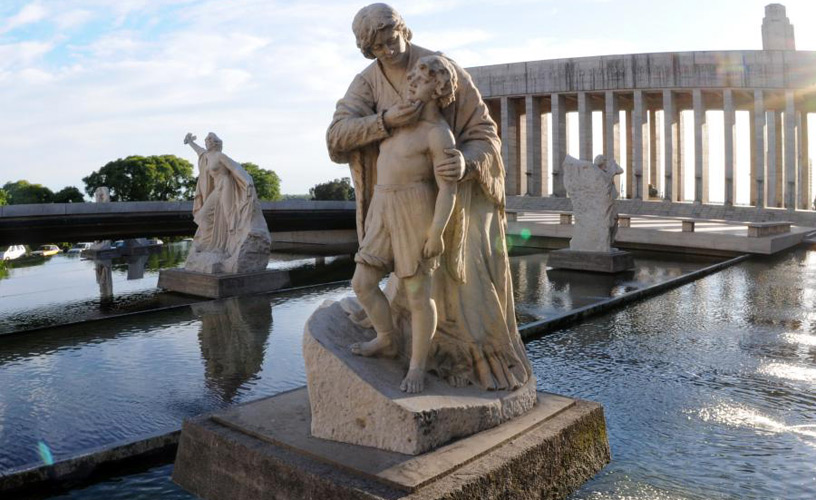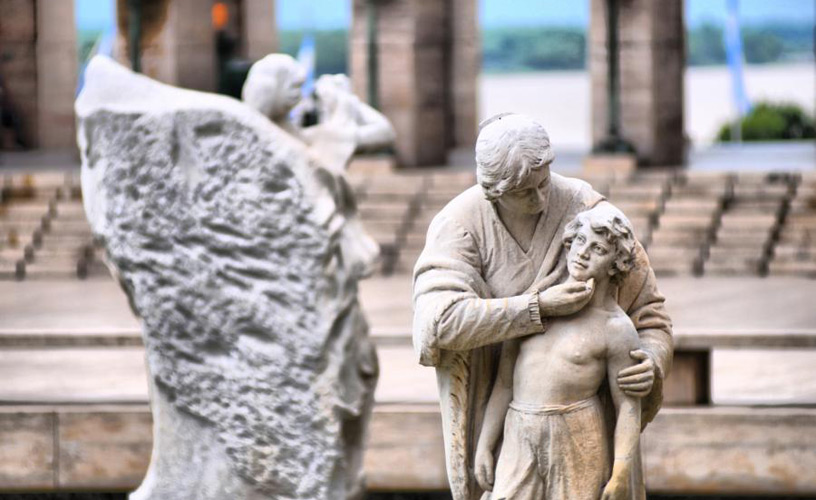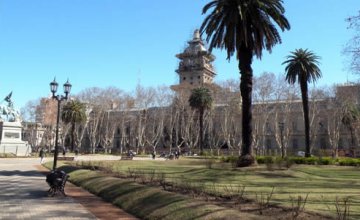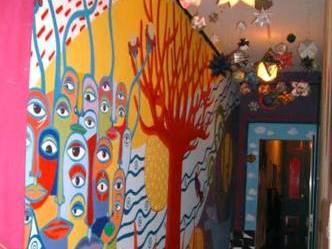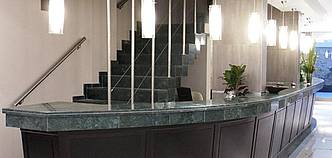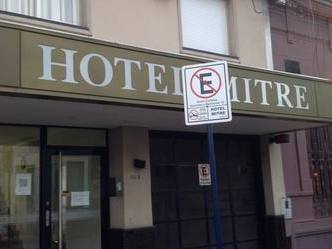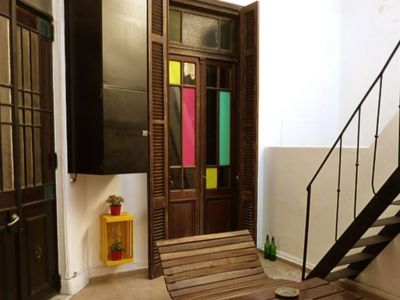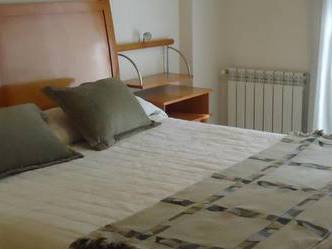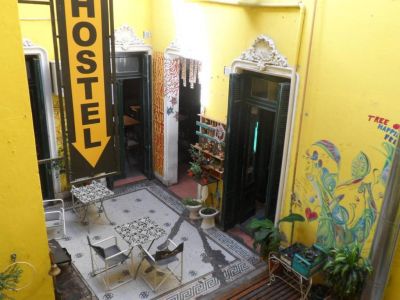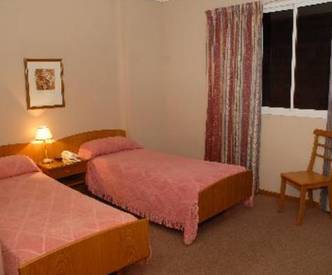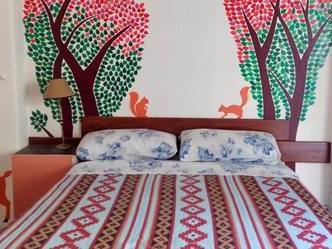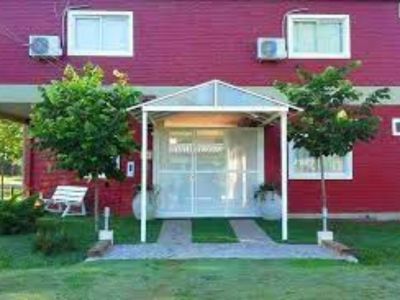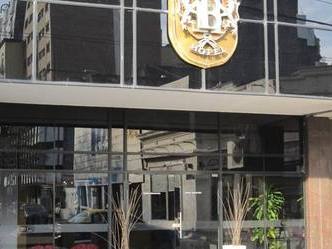Planted on the cliffs of the Paraná River, the National Monument to the Flag, displays its beauty for the visitors of the world to appreciate the colors of our motherland emblem.
The city of
Rosario was marked by a historical fact whose relevance transcended the local context, setting a landmark on national history: the hoisting of the National Flag created by Manuel Belgrano, on the cliffs of the Paraná River in February 27, 1872. This significant event filled the people of Rosario with so much pride that they slogged away at raising a monument in commemoration of such episode. Today, Rosario has the responsibility of showing the world the National Monument to the Flag, unique in its kind, planted on the historical cliffs of the Paraná, those which witnessed the birth of the colors of our motherland. Being in the city, it was a must to stop at that monument of which we only had a “fresh” image through the ten-peso bills. A partly cloudy day welcomed us in the winter morning of Rosario. Just a few warm sunbeams managed to filter through the leaden sky. Through the window of the hotel bar, we watched the people going by and perceived that it would be best to go back to our room to get warmer clothes.
Lola Mora and Pasaje Juramento We left towards the masterpiece. We walked along the pedestrian Córdoba Street in the direction of the Paraná River. Reaching the main square, 25 de Mayo, the bell tower of the Cathedral Church stroke ten in the morning. To its left stood the Palacio de los Leones (Palace of Lions) –where the Rosario Town Hall is based– and, between them, the entrance to the passage called Pasaje Juramento, which would lead us directly to the monument. While going along the passage, we watched an extraordinary sculptural group by
the artist Lola Mora, born in Tucumán. The statues La Victoria, La Libertad, La Madre, Belgrano and La mujer y el niño caught our attention. This way was inaugurated in the year 1997, and thus mayor Quiroga’s original idea from the year 1910 –to join the 25 de Mayo Square with the river- was fulfilled. In the background, among the high buildings, the so-longed Monument to the Flag rose.
The Splendor of the Monument We walked until we reached the Propylaeum –one of the parts of the monument– where we stopped to watch the votive flame, which permanently burns in honor of the dead for the country. The account a young guide was telling visitors about its ornaments captivated our attention. “The design of the monument from Our Motherland to its Flag belongs to sculptors José Fioravanti and Alfredo Bigatti and to architects Ángel Guido and Alejandro Bustillo. The masterpiece was inaugurated on June 20, 1957” –the guide explained to the tourists. Thanks to her we learnt that the building is made up of three parts: the tower with Manuel Belgrano’s crypt, from where the vantage point can be accessed, the Patio Cívico and the Propyleaum –where we were standing– and the Room in honor of the Flags of America underneath.
We resolved to find out more. We took the guided visit around the monument. This way, we would learn more about it. “It has been built in travertine marble, without a patina finish, brought from the Province of San Luis. With a Renaissance style, it was conceived in a grand scale and it occupies a ten-thousand-square-meter area.” –the specialist added. The ensign Belgrano bequeathed us Thus, we went along and across the impressive sculptural block. We learnt that its shape represents the motherland, in the figure of a ship advancing in the sea of eternity towards its best and grandest destinations, making its way impetuously among high waves broken apart by its biting prow. We passed by the civic steps, the Propylaeum. We entered Belgrano’s crypt and under the monument –on Santa Fe Street– we saw the Gallery in Honor of the Flags, where various emblems from the countries of the world are exhibited presided over by the Argentinian Flag. It was gratifying to stop at every detail of the monument. Every figure that is part of it has a justified explanation, a reason. Thrilling, indeed. Once the visit was over, we went out in search for a wider perspective, in order to appreciate the monument as a whole. We went to the edge of the Paraná River. Then we turned round and there it was, with its entire splendor, on the highest mast, thirty meters above us, the majestic flag from my motherland. Its eight meters of length and its four meters of width, waving solemnly in front of the monument, clearly displayed its light blue and white, with the sun embroidered in between by Rosario’s laborious women. Silent and smiling, we beheld the grand masterpiece, unquestionable icon of the busy and lively city of Rosario. Marcelo Sola
Gentileza Rosario.gov.ar
Phone: +54 341-4802238
